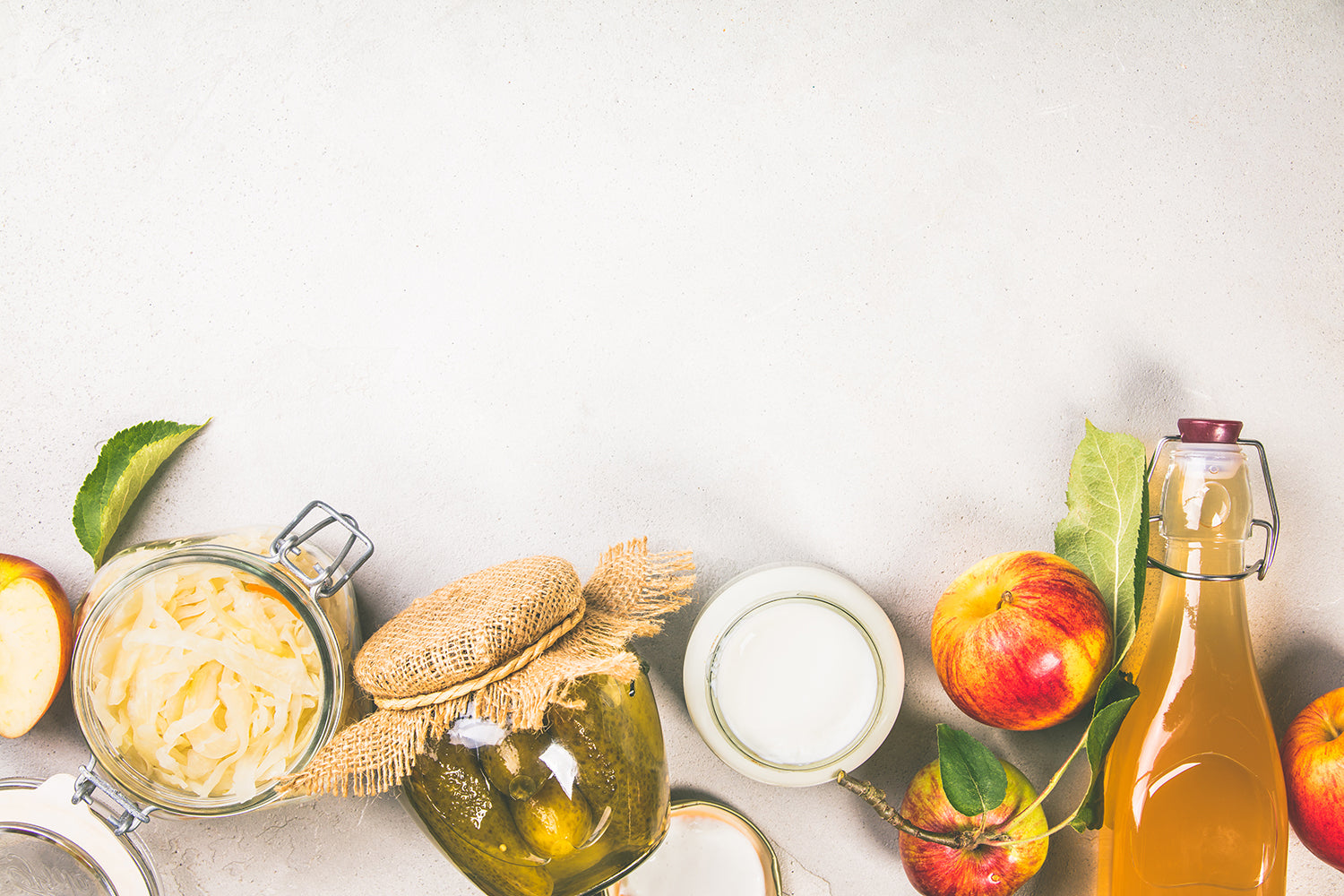
The 6 best fermented foods for gut health
The 6 best fermented foods for gut health
You’ve heard that fermented foods are good for gut health, but how exactly does it work?
How do fermented foods help gut health?
Fermentation is an ancient food preparation process that’s enjoying a renaissance amongst gut-health enthusiasts. Whether you love the taste of fermented foods, or are prepared to muscle through for the good of your gut, you’re probably wondering exactly how it works.
Fermentation extends the shelf life of seasonal foods, which would have been invaluable for our ancestors but is less relevant in our era of food availability. What’s really special about fermented foods is the probiotics.
Fermenting foods generates live cultures called microbes, which replenish important gut bacteria. Our modern diet leaves us prone to imbalanced gut bacteria, which can lead to issues including leaky gut syndrome, asthma, eczema, brain fog, and has even been linked to Alzheimer's disease.
Different kinds of fermented foods
The fermentation process uses bacteria and/or yeasts to break down sugars in the food and add live bacteria. Sounds gross, but it’s just what your gut wants!
Fermentation is one of the oldest methods of food preservation on the planet. As a result, there are 1000s of fermented foods (cheese and beer included!) But not all fermented foods contain the live microbes that are so beneficial to gut health.
What are the best fermented foods for gut health?
The best fermented foods to boost your healthy gut bacteria are those with live probiotics.
Kefir – a drink made from milk or water fermented with live kefir grains and flavoured with various options
Best way to eat: kefir is a drink which can range in consistency from a thin yoghurt to water. Keep it cold and drink whenever you like!
Kombucha - a drink usually made from tea which has kombucha scoby culture added to it during fermentation
Best way to eat: kombucha is usually a bit fizzy so keep it cold and enjoy any time during the day.
Sauerkraut – cabbage (and sometimes other vegetables) picked via lactic acid fermentation by layering with salt to ferment
Best way to eat: add sauerkraut to salads, wraps, sandwiches, or any other way you’d usually eat vegetables
Kimchi – cabbage, peppers and often ginger and/or chili fermented with salt and coated in a paste of ginger, garlic, and saeujeot
Best way to eat: kimchi is spicy and comes coated in a sauce, so enjoy it as a cold vegetable side or as part of a salad platter
Miso – soybeans and rice koji (rice with the fermentation culture, Aspergillus oryzae) fermented and made into a paste
Best way to eat: miso paste can be used as a marinade, made into a soup, or enjoyed as a hot drink
Tempeh – soybeans fermented with a starter culture and made into a firm block
Best way to eat: tempeh can be sliced, diced or crumbled and added to a huge variety of meals. It can be eaten raw or baked, fried, air fried.
Can you ferment your own foods at home?
It’s perfectly possible to make all of these fermented foods and drinks at home, but fermentation can be a long process. For that reason, we suggest you start out with the easiest option: sauerkraut. If you have a Korean or Japanese grocery store near you, stock up on real live kimchi and miso!
Fermented live raw sauerkraut recipe
Sauerkraut is the easiest fermented food to make at home. It doesn’t require a starter culture or any unusual equipment.
Ingredients:
1 whole green or white cabbage
2 tablespoons sea salt
Filtered or bottled water
- Sanitise your knife, chopping board, and storage jar with boiling to prevent unwanted bacteria
- Rinse the cabbage and remove the outer leaves (keep them for later)
- Shred the rest of the cabbage finely and transfer to a large bowl
- Feel free to add extras like carrots or ginger
- Add 2 tbsp salt and stir the cabbage until it starts to wilt
- Transfer the cabbage to a clean glass jar or another container with an airtight lid
- Press it down to remove as much air as possible
- Add enough water so the cabbage is just covered with liquid
- Put the outer cabbage leaves over the top so you can press out any air in the shredded cabbage
- If there’s still space between the top of the cabbage and the lid, add something sterile to act as a weight (it’s important to remove as much air as possible before fermenting)
- Seal the jar and leave it for 3-7 days.
- Store in the fridge – it should keep for at least 2 months.
The Gravity Fitness store stocks a huge range of traditional and unusual functional fitness equipment. Check out our range of fitness kit for home or the gym.












































